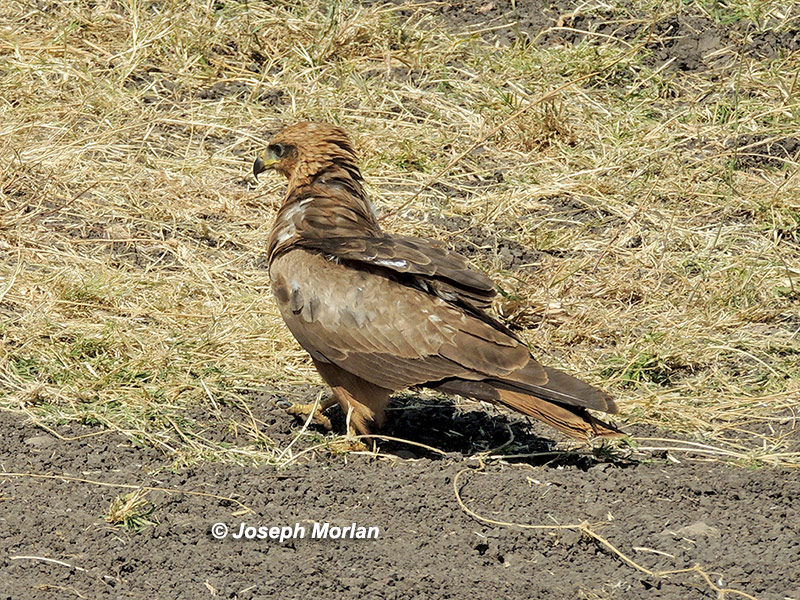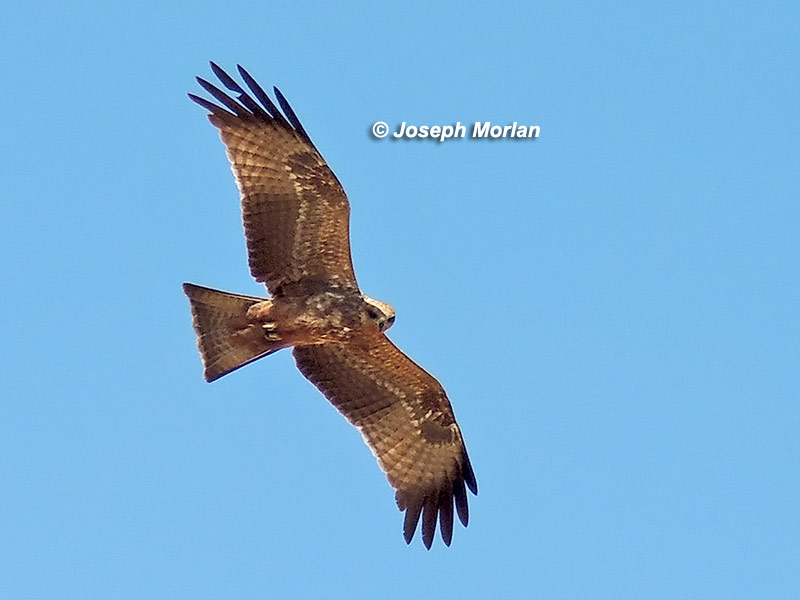


These kites can become common near garbage dumps or around human habitation. They are famous for stealing people's
lunches. This species may be divided into three polytypic groups:
- Black [migrans Group] - Highly migratory; breeding in the Palearctic
- Black-eared [lineatus/formosanus] - Highly migratory; East Asia
- Yellow-billed [aegyptius/parasitus] - Partly migratory; Africa
IOC, Birdlife International and the official Tanzania checklist, have split these groups into three separate
species. However this split is not accepted by Clements, HBW or African Bird Club. Under this split, birds resident
south of the Sahara are Yellow-billed Kite (Milvus aegyptius parasitus). Dark-billed birds from Europe (M.
m. migrans) migrate to Southern Africa where they are present October to March. However these birds do not
over-summer and would not be expected at Ngorongoro in July.
Although this bird has a mostly dark bill, it is actually a member of the Yellow-billed group. Its bill is dark
because it is a juvenile, as evidenced by the the uniformly worn plumage and the shape of the coverts (Dick Forsman
pers. comm.). Also there is pale yellow at the base of the bill which is where yellow begins to develop
as these birds age. At 1-2 years the bill changes to yellow (fide Simon Thomsett). However a small number
of Yellow-billed adults may have dark, not completely yellow bills (Bill Clark pers. comm.). The relatively
narrow wings with only five slotted primaries is another feature which favors Yellow-billed. Click here
for more detailed informaiton from Dick Forsman.
Nikon P510 Coolpix Point-and-shoot